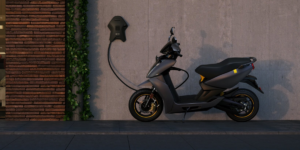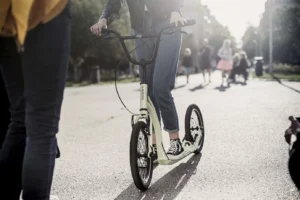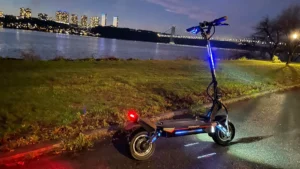In recent years, the electric scooter, or e-scooter, has rolled into urban centers worldwide, transforming the way people navigate cities.
This article explores the rise of e-scooters, their impact on urban mobility, and the factors contributing to their popularity as a convenient, eco-friendly mode of transportation.
The Rise of Electric Scooters
Electric scooters have become a common sight in urban landscapes, providing an alternative to traditional transportation methods.
Originating as a shared mobility solution, e-scooters have swiftly gained popularity among individuals seeking a quick, efficient, and sustainable way to move around urban environments.
Key Features and Benefits:
- Zero Emissions: One of the primary appeals of e-scooters is their eco-friendly operation. Powered by electric batteries, e-scooters produce zero emissions, contributing to cleaner air and a reduced carbon footprint in crowded urban areas.
- Last-Mile Connectivity: E-scooters excel in solving the “last mile” challenge of commuting. Users can conveniently ride from public transit stations to their final destinations, filling the gap between different modes of transportation.
- Ease of Use: E-scooters are designed for simplicity and ease of use. With intuitive controls and minimal learning curve, riders can quickly adapt to this mode of transportation, making it accessible for people of various ages and backgrounds.
- Portability: Many e-scooters feature a foldable design, allowing for easy portability and storage. Commuters can carry them onto public transit or stow them in compact spaces, enhancing their convenience for daily use.
- Affordability: E-scooters offer a cost-effective alternative to traditional commuting methods. With minimal maintenance requirements, lower operating costs, and reduced expenses compared to car ownership, they present a budget-friendly option for urban dwellers.
Considerations for E-Scooter Users:
- Safety Practices: Prioritizing safety is paramount. E-scooter users should adhere to traffic rules, wear protective gear, and be vigilant of pedestrians and other road users.
- Charging Infrastructure: Awareness of available charging stations and battery range is crucial for planning routes. Some cities have embraced dedicated charging infrastructure, while others rely on users to charge and maintain their scooters.
- Regulatory Compliance: Users should familiarize themselves with local regulations governing the use of e-scooters. This includes understanding where e-scooters can be ridden, parked, and any licensing requirements.
- Terrain Suitability: While e-scooters are designed for urban environments, users should be mindful of the terrain. Potholes, uneven surfaces, and steep inclines can impact the scooter’s performance.
Future Trends and Innovations:
- Technology Integration: E-scooters are likely to integrate with advanced technologies, including GPS navigation, connectivity with mobile apps, and real-time tracking to enhance the overall user experience.
- Improved Battery Technology: Ongoing research in battery technology may lead to advancements in range, charging times, and overall performance, addressing current limitations and enhancing the efficiency of e-scooters.
Conclusion
The electric scooter has emerged as a symbol of modern urban mobility, offering a sustainable, efficient, and affordable solution for daily commuting.
As technology and infrastructure continue to evolve, e-scooters are poised to play a pivotal role in shaping the future of urban transportation.
Whirring through the streets, these sleek and eco-friendly devices are not just a mode of transport but a dynamic force propelling cities towards a cleaner, more sustainable future.



